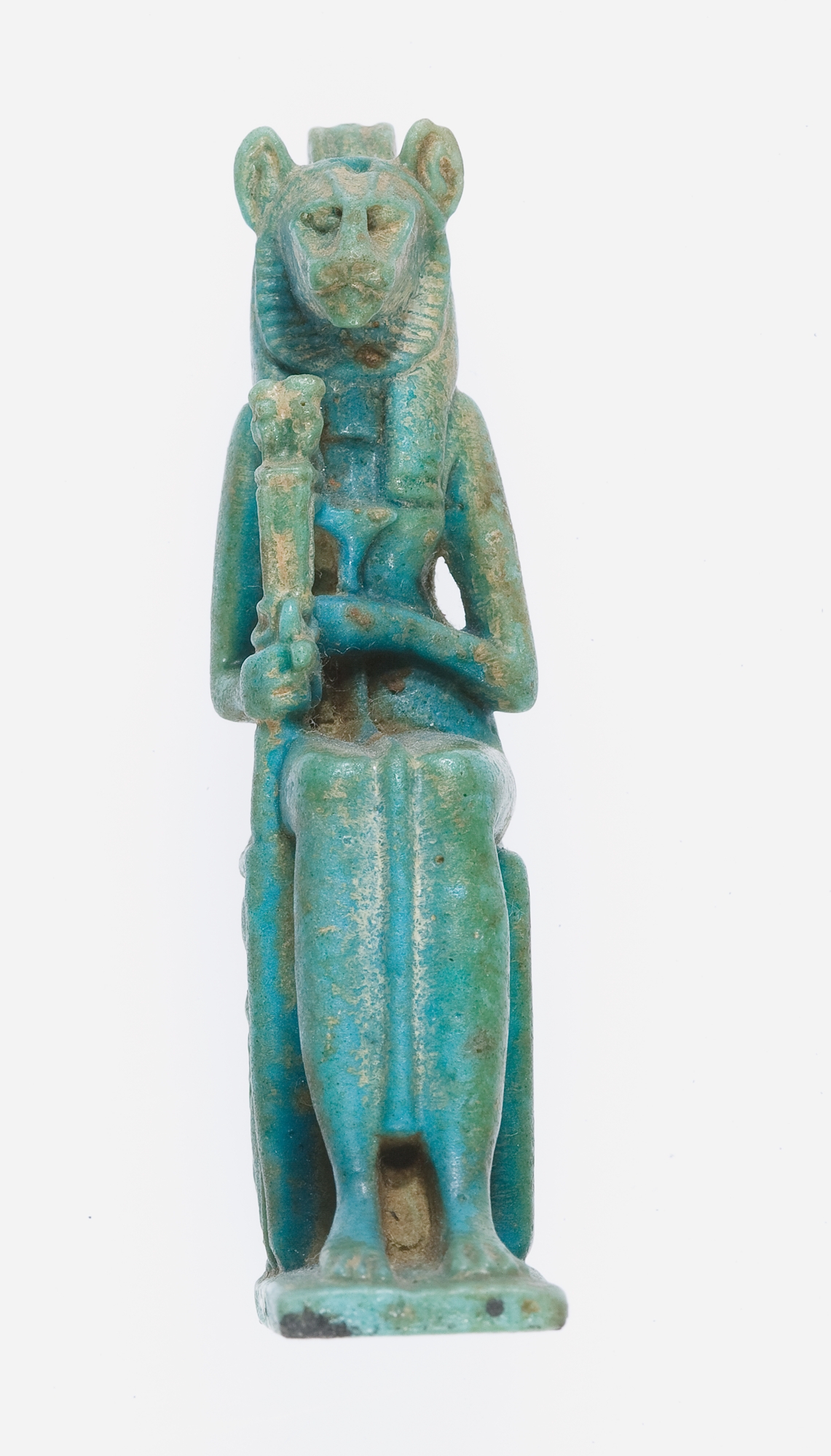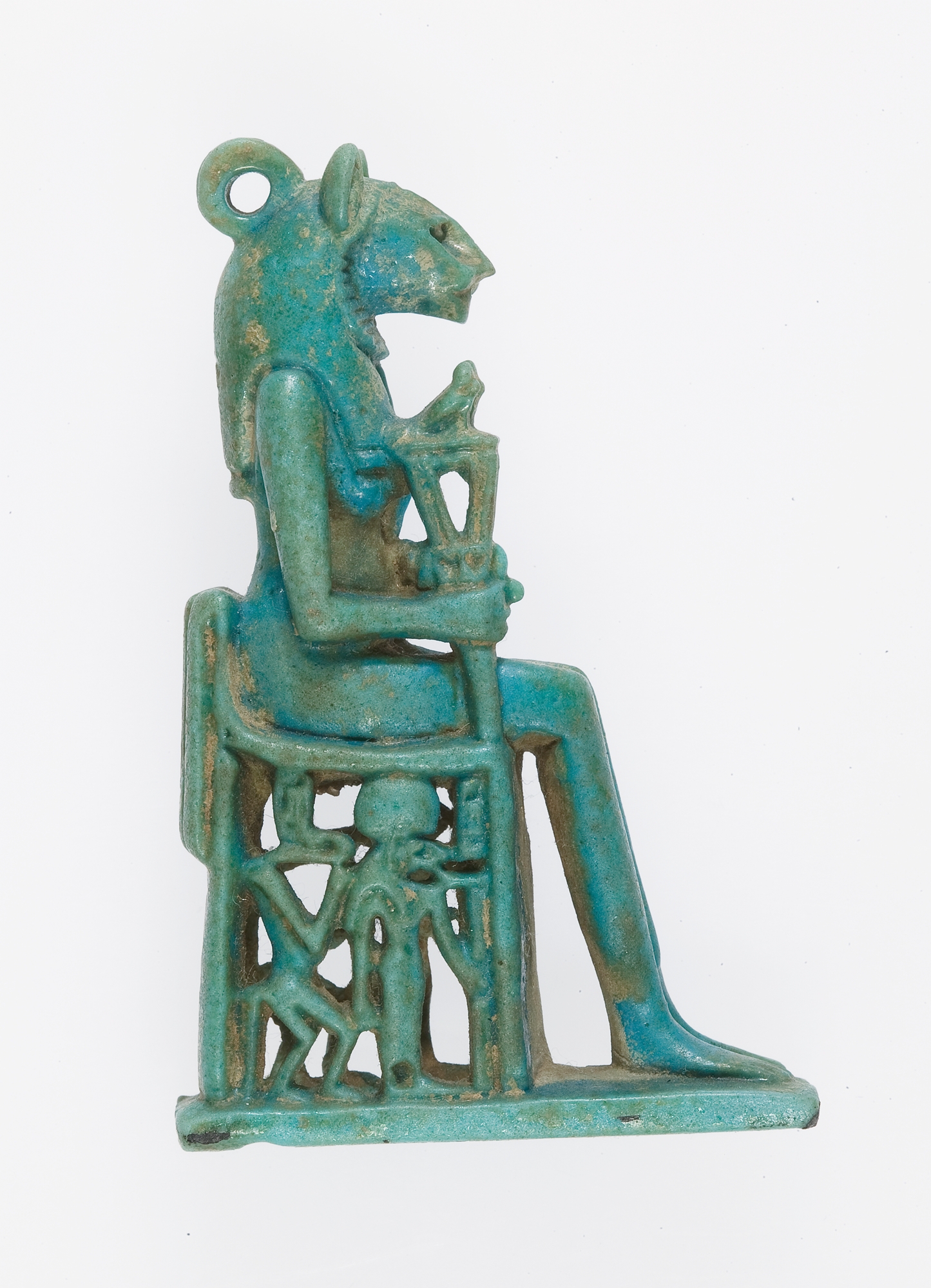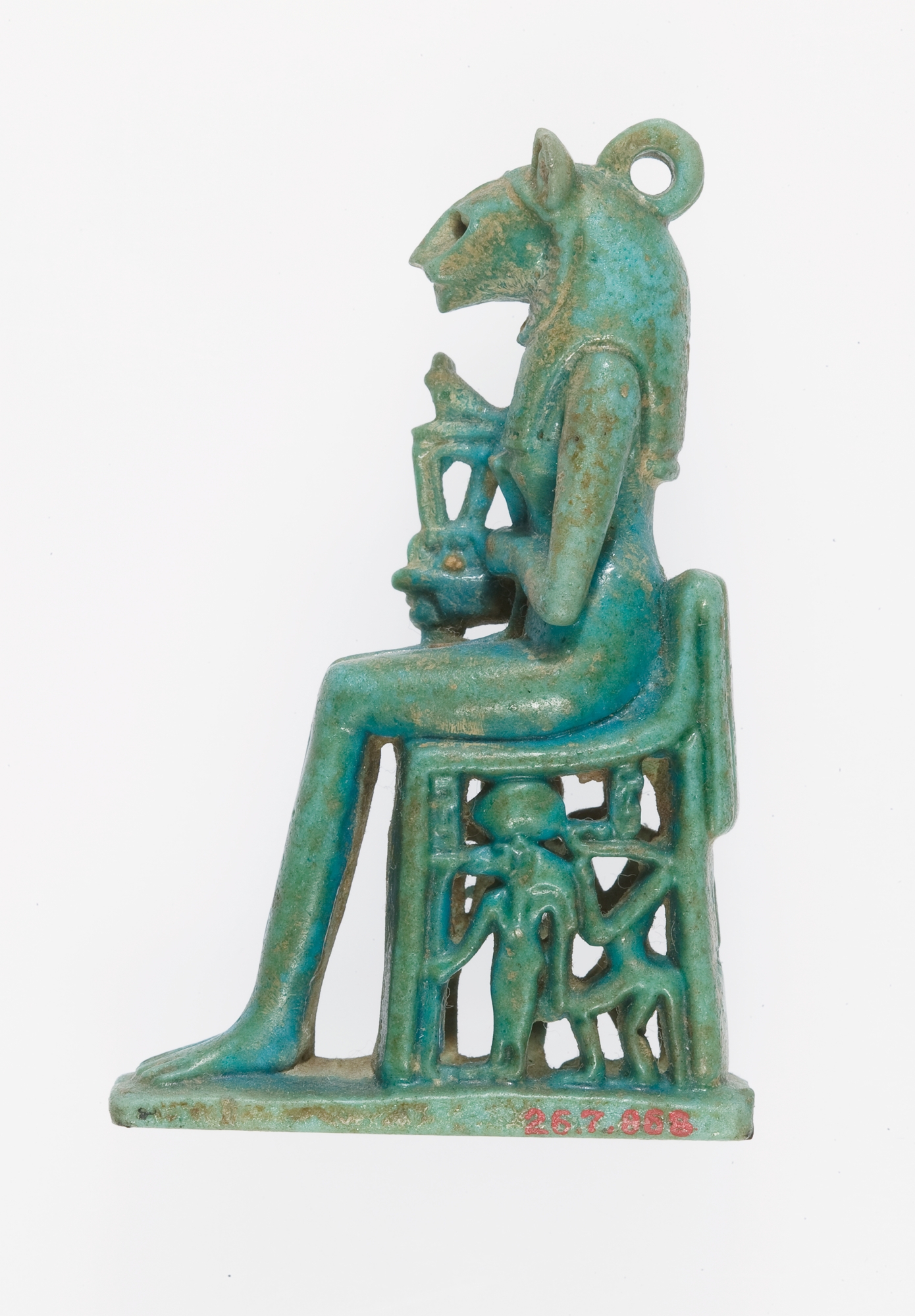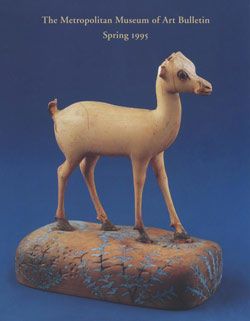Amulet in the Form of a Lion-Headed Goddess
Third Intermediate Period
This amulet represents a lion-headed goddess on an open worked throne. With her right hand she is holding a sistrum (a musical instrument like a rattle) that is topped by a double ba-bird. Her other hand clenches a papyrus-scepter that symbolizes regeneration and life. A number of lion-headed goddesses are known from ancient Egypt, such as Sakhmet, Bastet, and Wadjet, and it is unclear, which one is represented here. Each side of the throne depicts a lion-headed goddess with a sun disk on her head. Behind her is a snake god with human arms and legs, who is linked to stellar decans. Above the snake’s head and in front of the lion headed goddess are short columns of text that presumably give their names; but unfortunately they are undecipherable. All feline deities are closely connected to the sun god Ra and at the top of the large figure, between her ears, is a small hole that originally must have held a separately manufactured sun disk. The loop at the top of the amulet was meant for suspension. The Egyptians believed that amulets like this one evoked the power of the goddess and put the wearer under her protection.
Due to rights restrictions, this image cannot be enlarged, viewed at full screen, or downloaded.
This artwork is meant to be viewed from right to left. Scroll left to view more.






